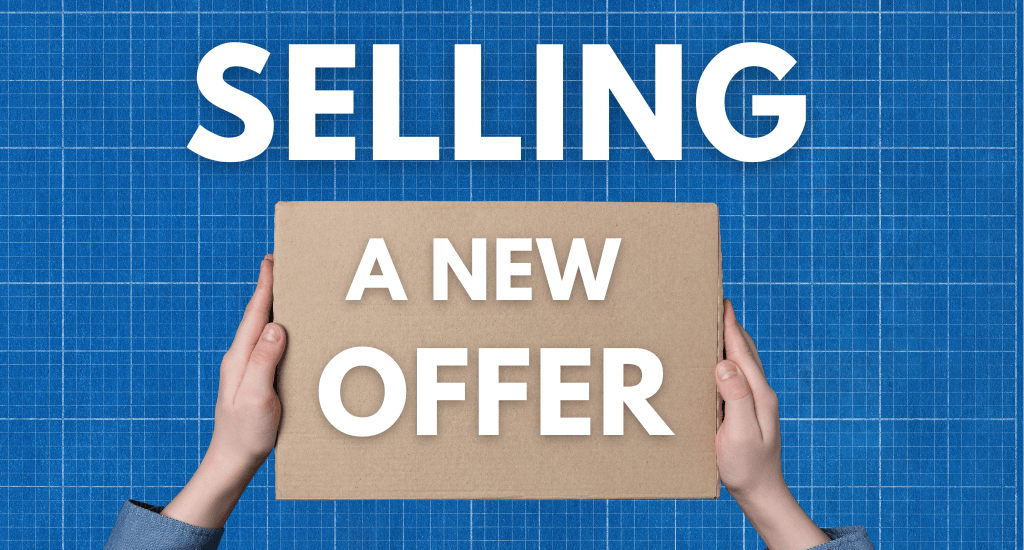- The Follow Up
- Posts
- How to Bring a Brand New Offer to Market
How to Bring a Brand New Offer to Market
The playbook and hacks for successfully launching and selling a new product
Good Morning! Good Morning! Welcome to July, aka the week where half your prospects are "OOO until Monday" and the other half are mentally checked out. Yes, responses will be slow. Yes, every follow-up will feel like shouting into the void. And yes, we’ll be off Thursday too because even we know better than to send a newsletter the day before the 4th. We’ll see you next week! Now let’s get into today’s Follow Up. 😁
Follow up through a different channel 🗣️
Bringing a new offer to market 📦️
Laid off with a $1.2M pipeline 😬
Sales jobs & a meme 😂
Sales Tip of The Day 💡
When you stop getting responses to your email, try switching up the outreach channel.
Instead of sending another follow up email, try dropping a LinkedIn voice note.
🗣️“Hey Bob, I figured you’ve probably been slammed these last couple of weeks. Just wanted to see if {what we talked about} is still a priority?”
This acts as a pattern interrupt from your typical outreach and reminds them you exist. And most importantly, it makes it harder to ignore you.
🚀 Crush Your Sales Quota with AI-Powered Strategies
The modern sales playbook that combines proven frameworks with cutting-edge AI to help you exceed targets consistently.
AI-driven techniques to 2X your response rates. Master the 10-30-10 video framework that converts. Discover proven questions that uncover true customer pain points and Battle-tested tactics to outmaneuver competitors.
What makes this different? We've merged time-tested sales frameworks with AI technology to create a system that actually works in today's market.
[Download Now] to access strategies that top performers are already using!

Hacks for Selling a Brand New Offer
Selling a brand new offer feels like you're pulling something out of thin air.
Your customers have never heard of it. You have zero case studies. No testimonials. No proof it actually works.
But here's the thing… Every successful product went through this exact same process.
At one time, Amazon was just an online bookstore, and AWS wasn’t even a thought. Fast forward to today, and AWS makes >$2 billion a week and is Amazon’s most profitable offering.
That doesn't mean it’s easy. But it does mean it's absolutely possible.
So we sent the intern out to study the businesses that have successfully done it, and found the best hacks for selling new products. Let’s dive in. 👇️
1. Borrow Credibility
When your product has zero proof, steal credibility from wherever you can find it.
That could be:
Your company's track record or brand.
Results from early trial users.
Relationships you've built over time.
Stripe nailed this when they launched Atlas for startups. They were known for making internet payments easy, not incorporation tools. So they wrapped Atlas in Stripe’s credibility: YC partnerships, founder testimonials, and a landing page that screamed "Silicon Valley success."
Your new product might be unproven, but you need to give your customers a reason to trust it.
2. Create FOMO with a Trojan Horse Offer
You can't say "it's new" and expect people to care. But you can wrap it in something they already want.
Superhuman built their early sales motion this way.
Their product was weird (an invite-only premium email app). But their pitch was simple: "We'll help you hit Inbox Zero and save 3 hours a week."
Then they walked you through white-glove onboarding that made the product feel like a secret weapon.
Your goal with a Toan Horse offer is to make your new product feel exclusive and designed just for them. Frame it as a special access or beta opportunity.
Bonus points if you can say something like: "Only 5 customers are getting early access."
3. Target Early Adopters
Not everyone will jump on unproven tech. Focus your energy on early adopters who feel the pain it solves and are willing to try something new.
The ideal first customer has a problem, knows it, has tried to fix it, is unhappy with current solutions, and has the budget to solve it.
Many years ago, a California company developed an automated traffic-counting tool and sold it first to consulting firms that were manually tracking traffic. These early customers overlooked minor bugs because the benefits (fewer errors & lower costs) were so much better than their manual approach.
Early adopters have higher risk tolerance. They'll give new products a shot if they address pressing pain.
Find these people on LinkedIn, X, or through your network of current customers who have shown a willingness to jump on new opportunities.
4. Sell the Solution to Pain
We know… you’ve probably heard this a million times: “Don’t sell the product, sell the solution”.
But it’s because it’s true.
Selling a new product is hard. Selling a painkiller is easy(er).
When Rippling launched, HR teams didn't say, "I want a better employee graph." They said, "I'm sick of onboarding taking 2 days and 5 tools." So Rippling sold instant onboarding, and everything else followed.
Before you go out and start pitching prospects on the new feature or product, get super clear on the reason someone would want to use it in the first place.
Then sell the aspirin.
What have you found to be the hardest part of selling a new product? |


